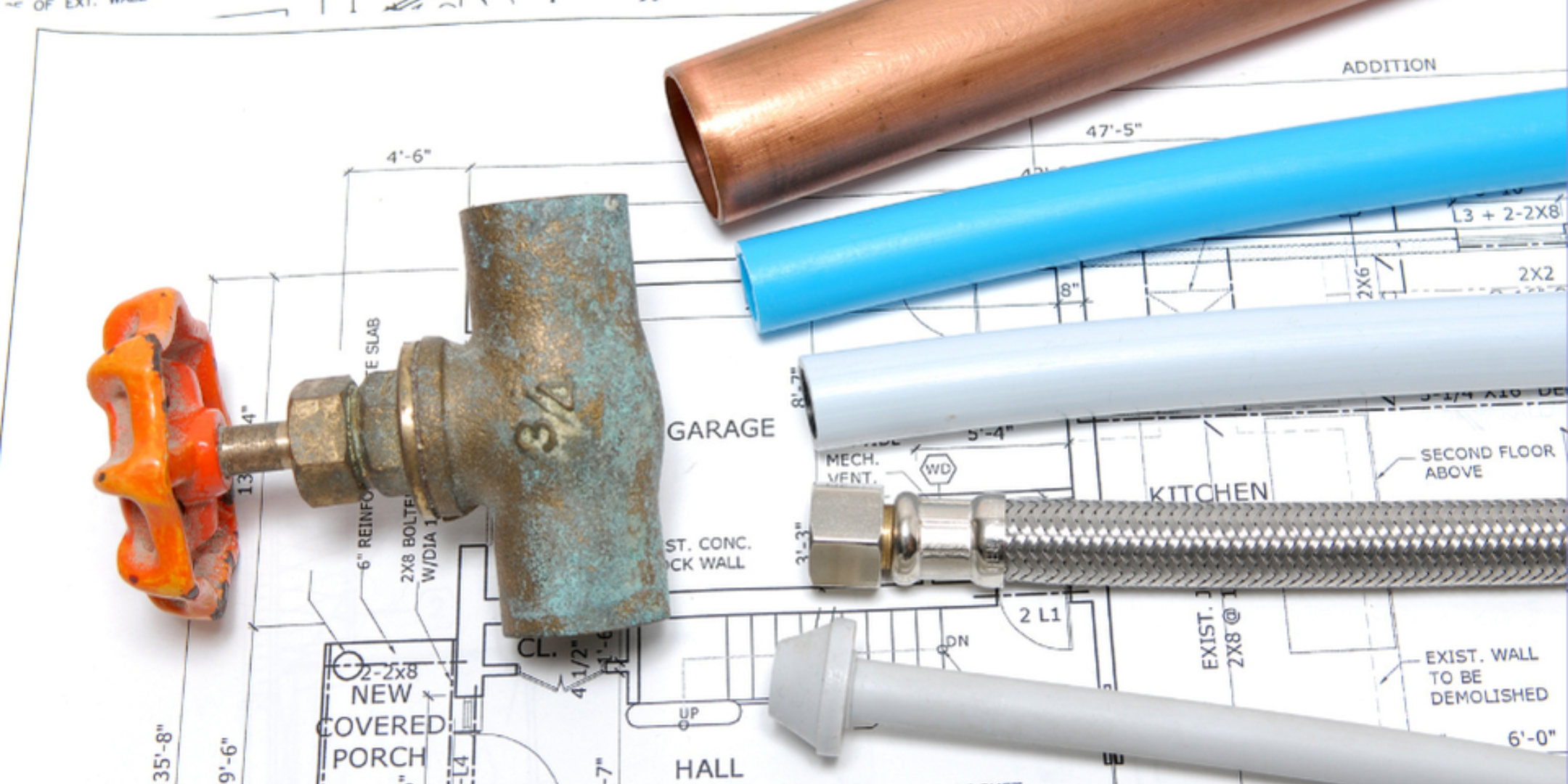
We understand that choosing the right plumbing pipes for your home can be a daunting task, especially when you’re faced with various options and unfamiliar terminology. 
The hardness of your water quality adds another layer to this decision-making process, as it can significantly impact the longevity and performance of your plumbing system.
At A&E Plumbing, Heating and Air, we have proudly served the Columbia River Gorge for over 16 years, earning a reputation for reliability and excellence in all things plumbing.
In this article, we'll help you navigate the pros and cons of each option, ensuring your home's plumbing system is efficient, durable, and perfectly suited to the conditions of our region. Whether you’re starting a new construction project or considering an upgrade to your existing system, you should finish this article with a clear understanding of the advantages and disadvantages of each option.
How Does Water Quality Can Affect Your Home’s Pipes?
Water hardness can significantly impact the longevity of home plumbing pipes, with varying effects on different materials. In places where the water is known for its moderate hardness due to minerals like calcium and magnesium, these minerals can affect certain types of pipes differently.
Hard water can lead to the buildup of mineral deposits inside pipes, known as scaling. In copper pipes, this scaling can gradually narrow the internal diameter, restricting water flow and increasing the risk of clogs and pressure issues. Over time, these deposits also contribute to corrosion, leading to leaks and costly repairs.
PEX pipes, on the other hand, are more resistant to scaling and corrosion, making them a preferable option in areas with hard water. This is because they are made from a flexible plastic material that does not react with water and minerals. Unlike metal pipes, PEX is not prone to the chemical reactions that cause scaling or corrosion, ensuring a longer lifespan and less maintenance.
With this in mind, the decision between copper and PEX pipes becomes even more critical.
Copper Pipes: Advantages and Disadvantages
Copper pipes have been a staple in home plumbing for many decades, renowned for their durability and reliability. Here’s an in-depth look at the pros and cons of using copper pipes in your home: 3 Advantages of Copper Pipes
3 Advantages of Copper Pipes
1. Durable and Long-Lasting
Copper pipes are known for their exceptional longevity. With proper maintenance, they can last over 50 years, making them a cost-effective investment for homeowners looking for a long-term plumbing solution.
2. Corrosion-Resistant
These pipes are naturally resistant to corrosion, which means they can handle high-pressure water systems without degrading. This resistance makes them ideal for a variety of plumbing applications, ensuring a reliable water supply over the years.
3. Heat Tolerance
Copper pipes perform excellently in both hot and cold water applications. Their high heat tolerance means they can withstand the temperature fluctuations that come with household plumbing systems, ensuring consistent performance regardless of the water temperature.
2 Disadvantages of Copper Pipes
1. Not as Flexible
Copper pipes are less flexible than PEX, making them harder to install, especially in tight or complex spaces. This rigidity requires more fittings and connections, increasing both labor time and potential points of failure. Additionally, copper pipes are more challenging to maneuver around obstacles and existing structures.
2. Can Develop Pinholes
Corrosion in copper pipes can sometimes lead to the development of pinhole leaks. These small leaks can be difficult to detect initially but can cause significant water damage if not addressed promptly. Repairing or replacing pipes with pinhole leaks can be both costly and time-consuming.
PEX Pipes: Advantages and Disadvantages
PEX (cross-linked polyethylene) pipes have become increasingly popular in residential plumbing due to their numerous advantages and ease of use. 3 Advantages of PEX Pipes
3 Advantages of PEX Pipes
1. Flexible and Resistant to Freezing
PEX pipes are highly flexible, which allows them to bend around corners and fit into tight spaces without the need for many joints or fittings. This flexibility also makes PEX resistant to bursting in cold weather, as it can expand and contract with temperature changes. This characteristic is particularly beneficial in areas that experience freezing temperatures, reducing the risk of costly water damage from burst pipes.
2. Less Likely to Develop Leaks
The reduced number of joints and fittings in PEX piping systems minimizes potential leak points. This makes PEX a more reliable choice for long-term plumbing solutions, as fewer joints mean fewer opportunities for leaks to develop over time.
3. Resistant to Scale and Chlorine:
Unlike metal pipes, PEX does not corrode or develop scale, making it an excellent choice for areas with hard water. The smooth interior of PEX pipes prevents mineral buildup, maintaining consistent water flow and pressure. Additionally, PEX is resistant to chlorine, which is commonly used in water treatment, ensuring the longevity and safety of the plumbing system.
2 Disadvantages of PEX Pipes
1. UV Sensitivity
One of the significant drawbacks of PEX pipes is their sensitivity to ultraviolet (UV) light. Prolonged exposure to sunlight can degrade the material, making it brittle and prone to cracking. Therefore, PEX should be stored and installed in areas shielded from direct sunlight to maintain its durability.
2. May Not Last as Long as Copper
While PEX is a durable and reliable material, it is relatively newer compared to traditional copper pipes. As a result, its long-term lifespan is still being evaluated. Copper pipes have a proven track record of lasting over 50 years, whereas the longevity of PEX pipes, although promising, is not yet fully established. Homeowners considering PEX should weigh the benefits of modern, flexible piping against the time-tested reliability of copper.
promising, is not yet fully established. Homeowners considering PEX should weigh the benefits of modern, flexible piping against the time-tested reliability of copper.
PEX pipes offer a flexible, cost-effective, and durable solution for many plumbing applications. However, homeowners should consider factors like UV exposure and long-term performance when choosing the best material for their plumbing needs.
General Price Points for Copper Pipes vs. PEX Pipes
When considering the costs of copper and PEX pipes for your home plumbing, it's important to account for both materials and installation. Prices can vary based on factors such as location, project complexity, and labor rates, but these estimates provide a general idea of what to expect.
Copper Pipes Price
Materials
-
Copper pipes typically cost between $2.50 to $5.00 per linear foot.
-
Fittings, connectors, and other necessary components can add an additional $1.00 to $3.00 per fitting.
Installation
- The labor cost for installing copper pipes can range from $4.00 to $10.00 per linear foot, depending on the complexity of the job and regional labor rates.
- On average, expect total installation costs (including materials and labor) to be between $8.00 to $15.00 per linear foot.
Total Cost Example
For a typical home plumbing project requiring 100 linear feet of copper piping, the total cost typically ranges from $800 to $1,500, including both materials and labor.
PEX Pipes Price
Materials
- PEX pipes are generally cheaper, costing between $0.50 to $2.00 per linear foot.
- Fittings and connectors for PEX typically range from $0.50 to $2.00 per fitting.
Installation
- The labor cost for installing PEX pipes is lower, usually ranging from $1.50 to $3.00 per linear foot, due to the ease and speed of installation.
- On average, expect total installation costs (including materials and labor) to be between $3.00 to $5.00 per linear foot.
Total Cost Example
For a similar home plumbing project requiring 100 linear feet of PEX piping, the total cost could range from $300 to $500, including both materials and labor.
Making Your Choice: Copper or PEX?
Copper pipes offer durability and a professional appearance, making them a reliable choice for many homeowners. However, the higher costs and labor-intensive installation, combined with potential corrosion issues in hard water areas, are important considerations.
On the other hand, PEX pipes provide a flexible, cost-effective solution that is resistant to scale and corrosion, making them well-suited for hard water conditions. Despite their advantages, PEX pipes do have limitations, such as UV sensitivity and an uncertain long-term lifespan compared to copper.
scale and corrosion, making them well-suited for hard water conditions. Despite their advantages, PEX pipes do have limitations, such as UV sensitivity and an uncertain long-term lifespan compared to copper.
By weighing the pros and cons of copper and PEX pipes and considering your home's specific needs, you can make an informed decision that ensures the efficiency, durability, and safety of your plumbing system.
Now that you have a better understanding of which piping option may be better for your home, be sure to check out our other article, “How Much Does a Plumber Cost?” to avoid common pitfalls that can end up costing you more than you had initially planned.
Daphne Hunt holds a bachelor's degree in English and Mass Communication and has a lifelong passion for writing. She thrives on using her skills to craft compelling pieces that inform, inspire, and connect with readers.
Topics:

